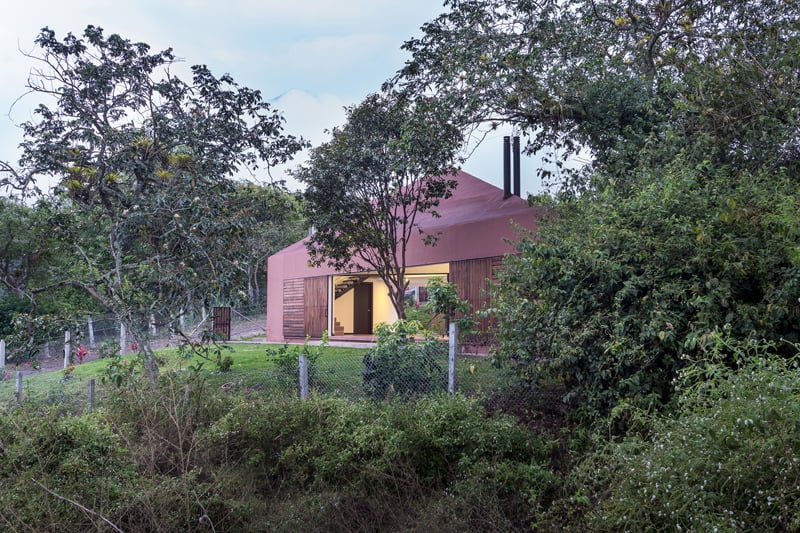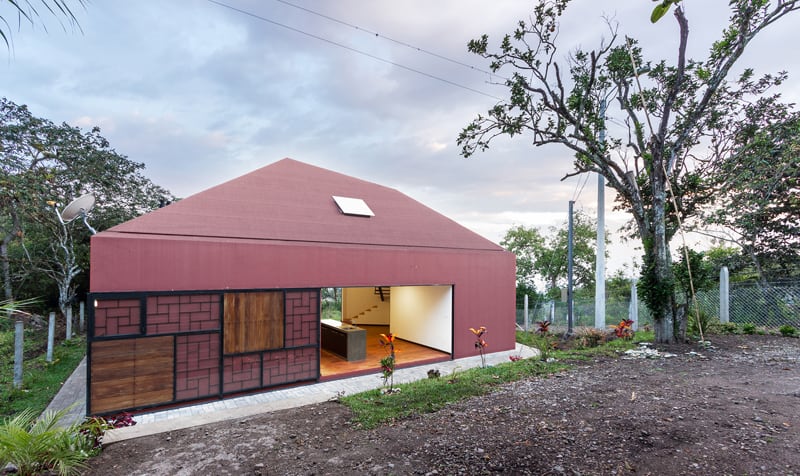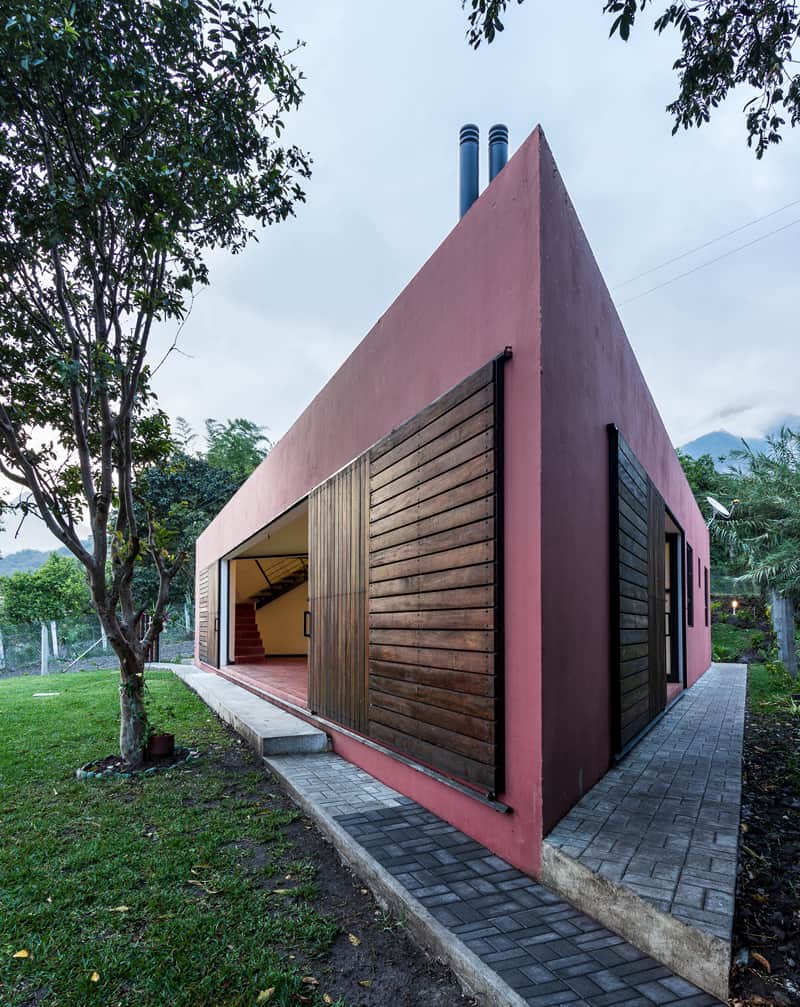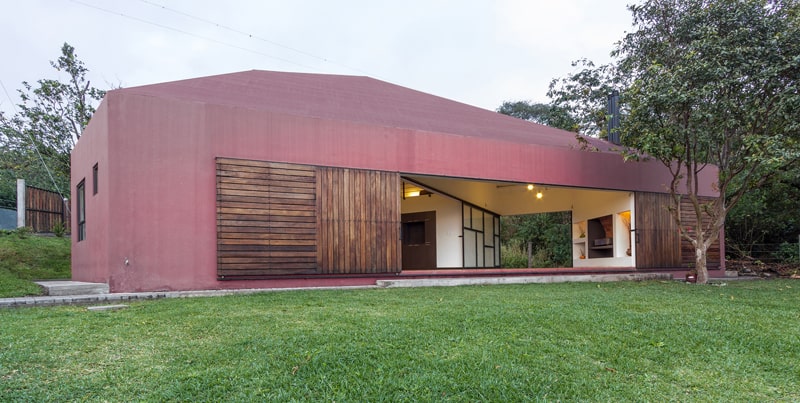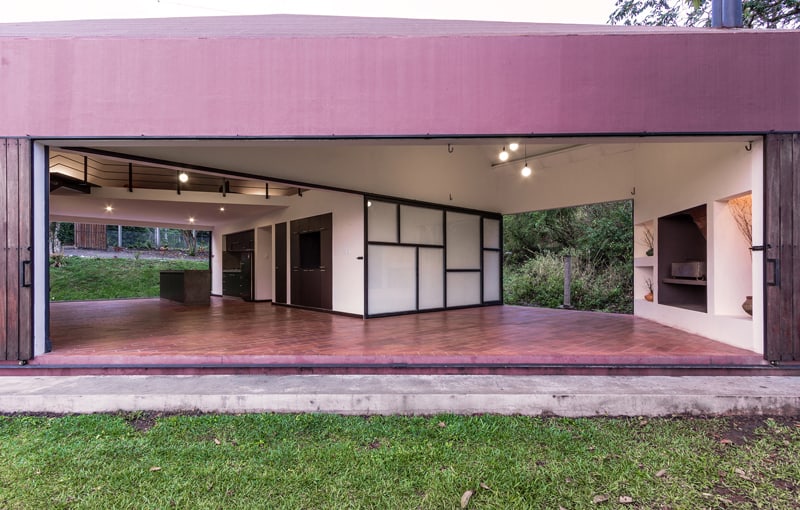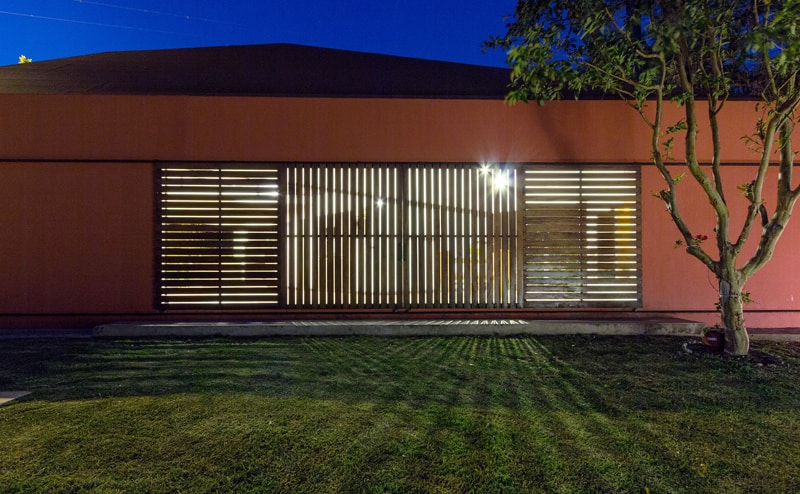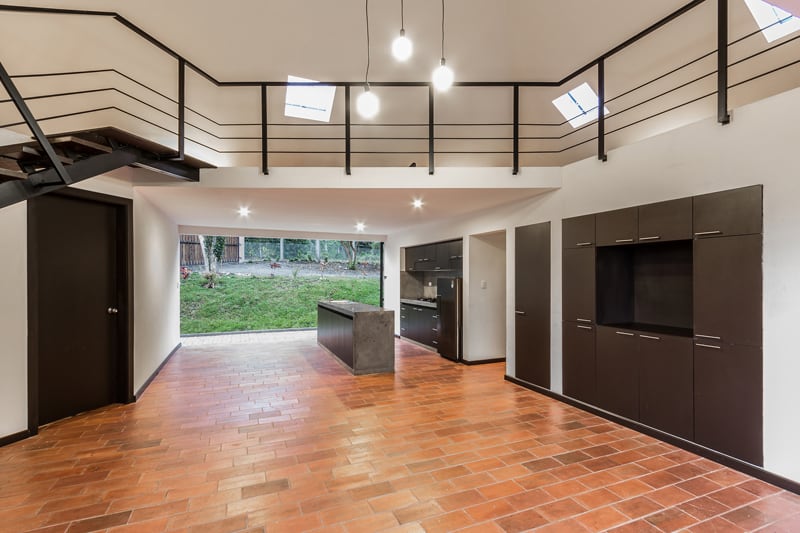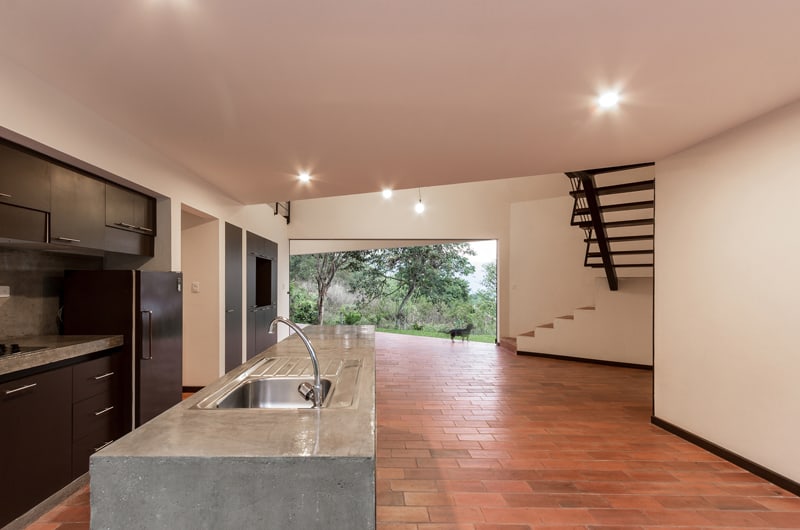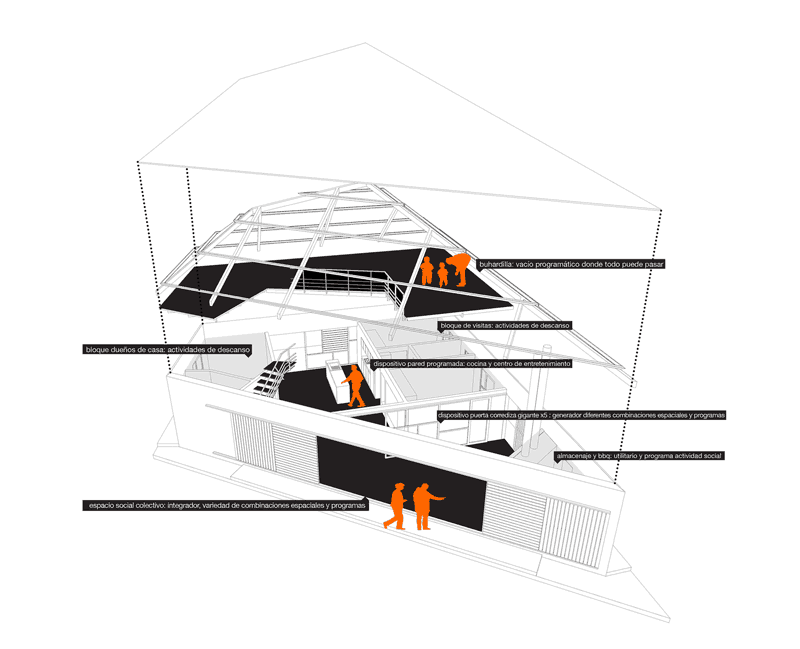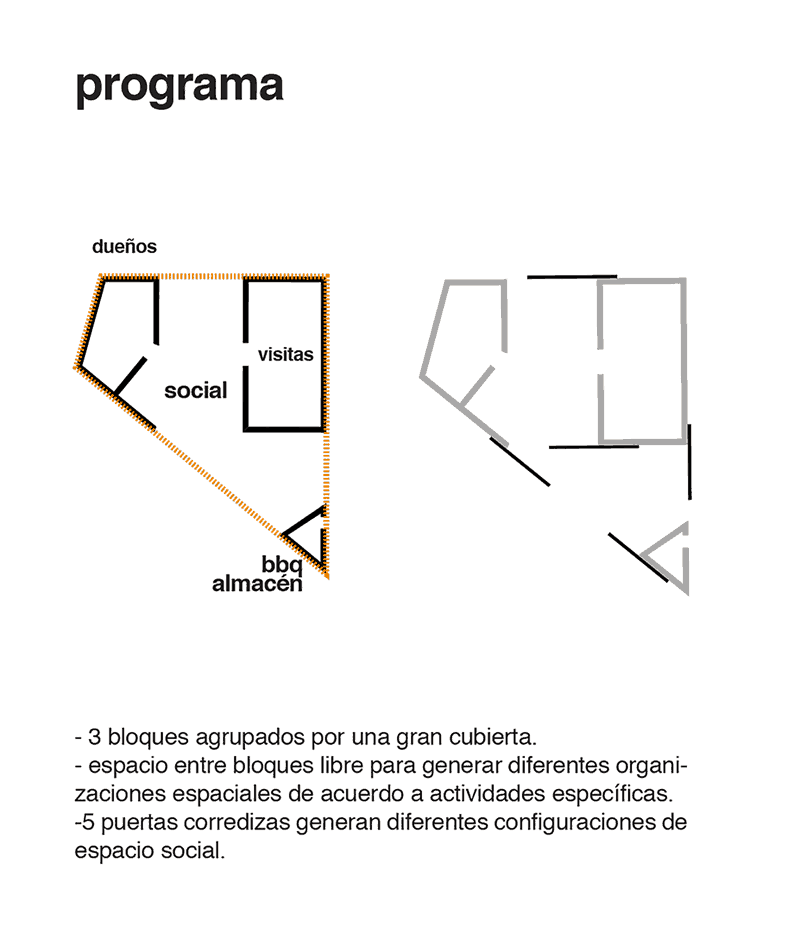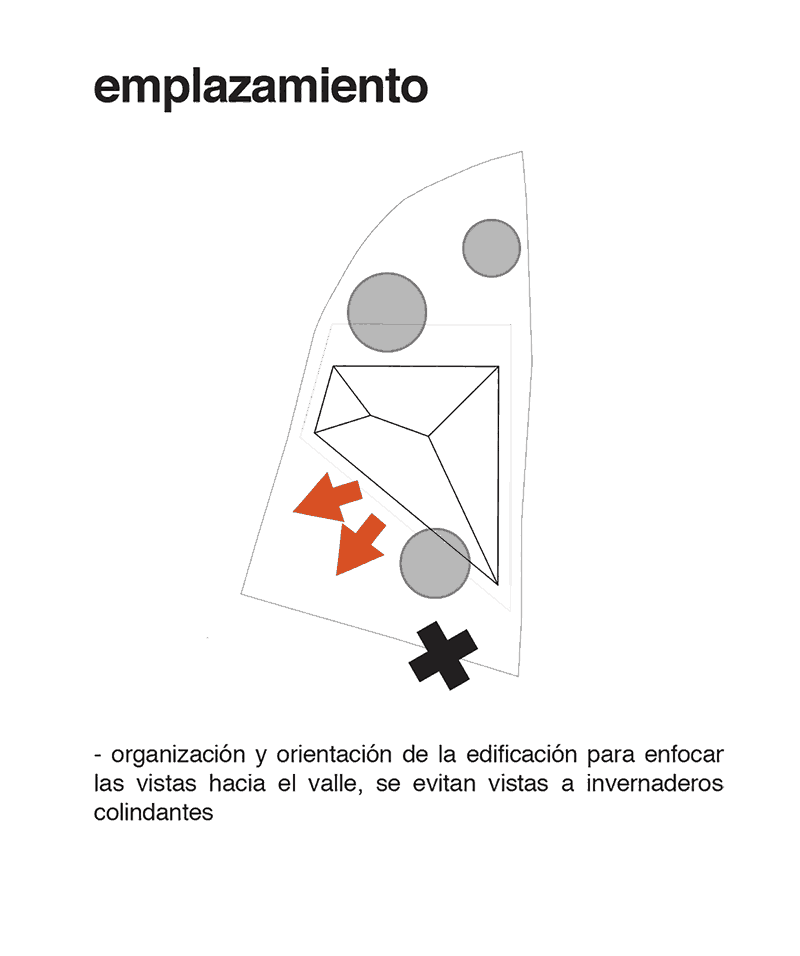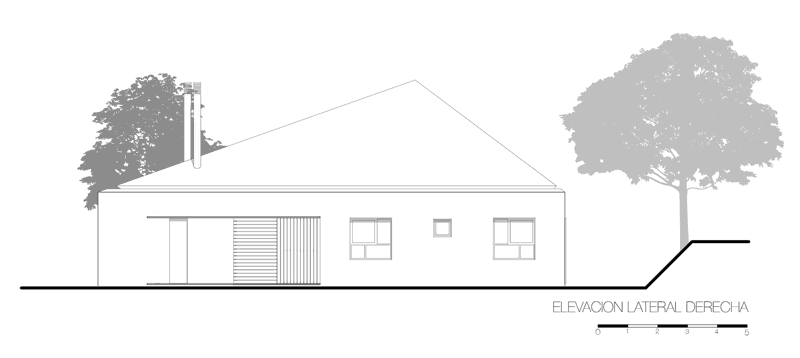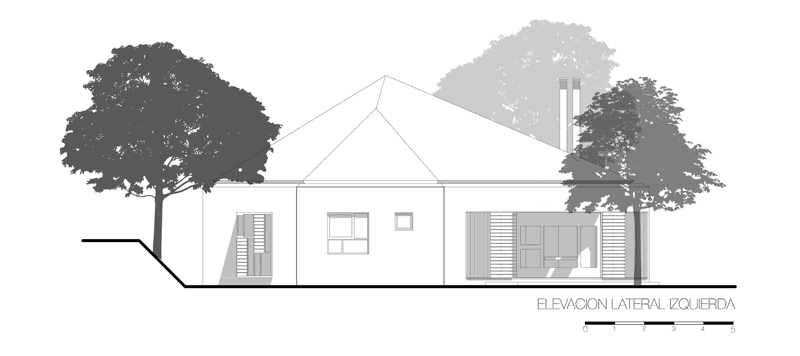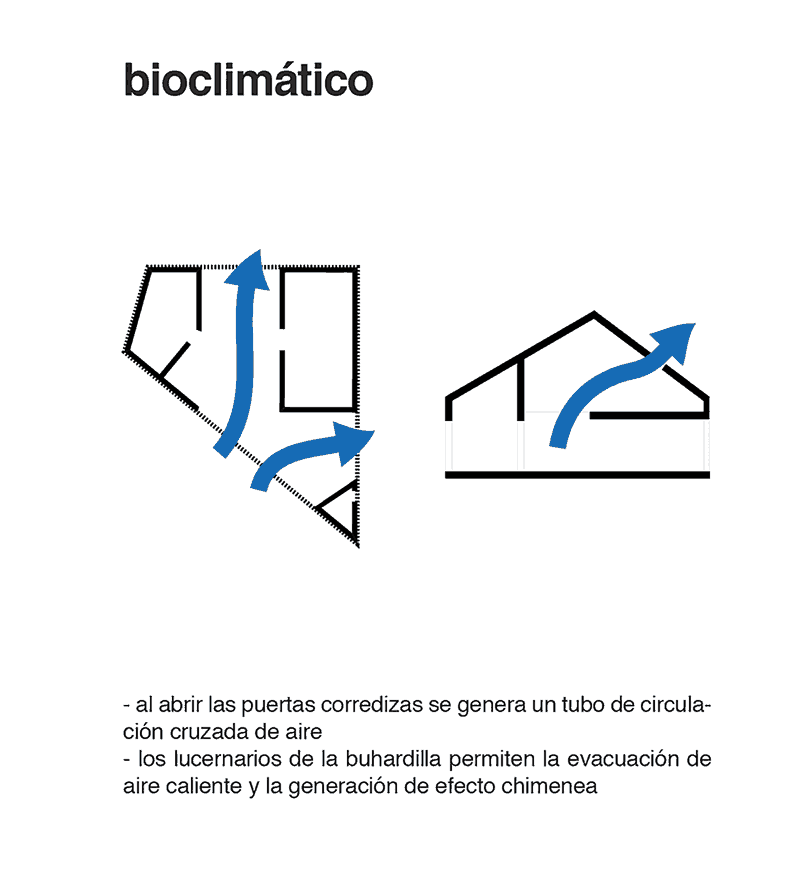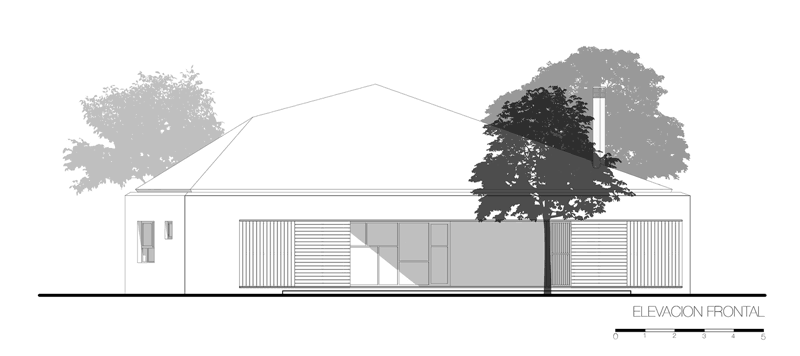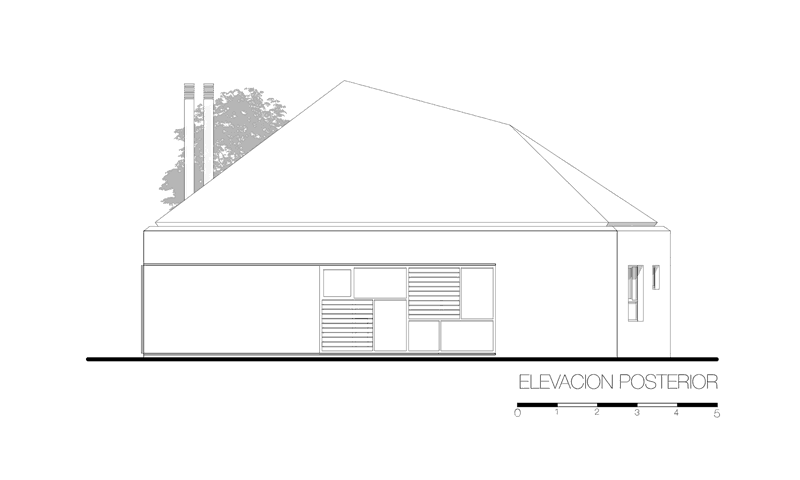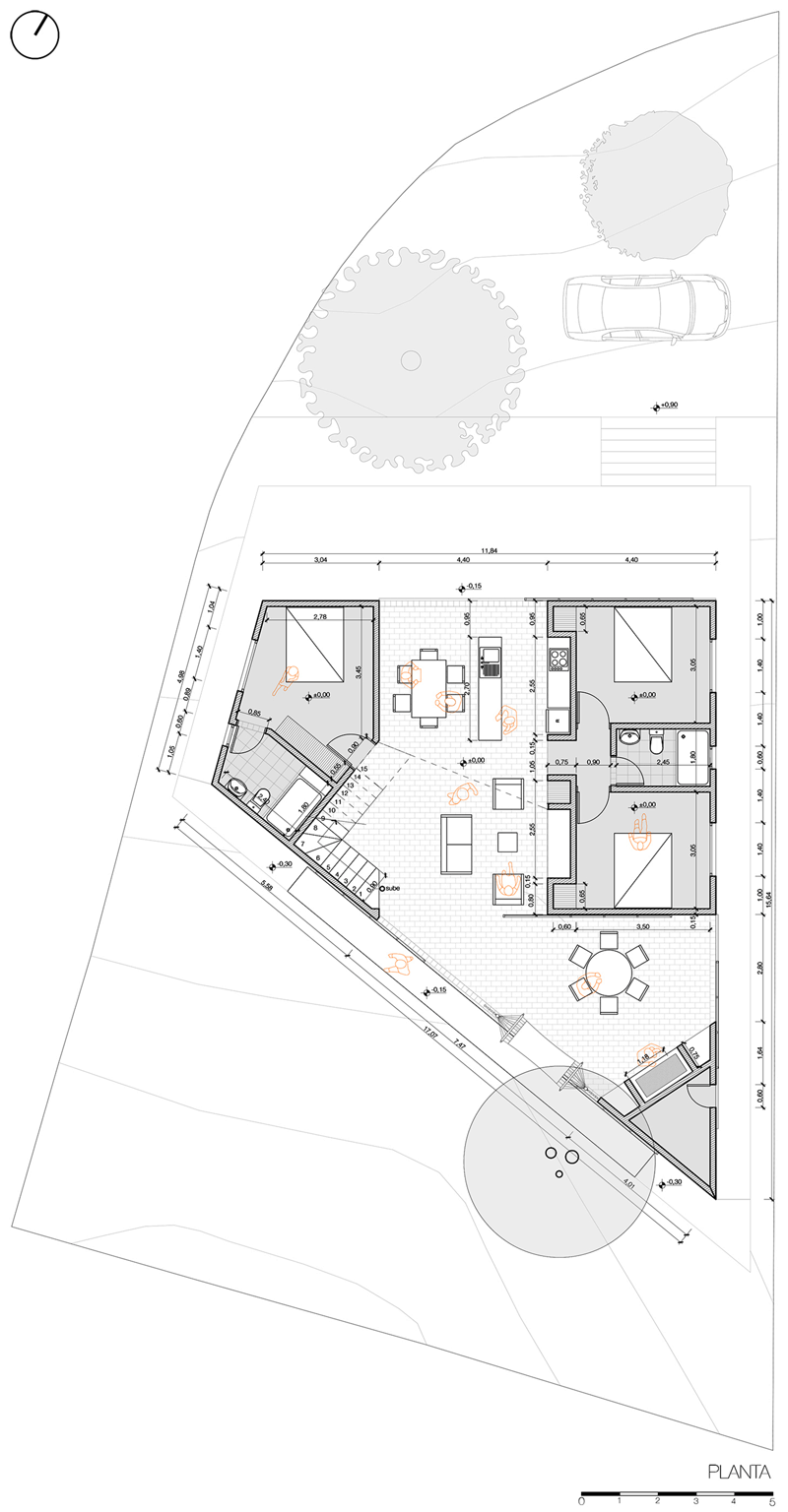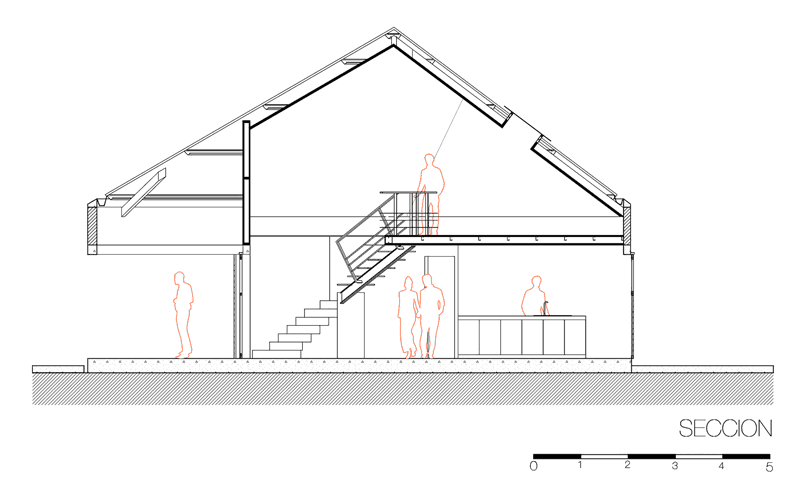When seen from outside, economic buildings look like warehouses. But, after you step inside, a comfortable and enjoyable world may reveal. Spotted on archdaily.com, CF House below is a good example that you do not have to judge a book by its cover. Completed in 2013 by Christian Calle Figueroa, the dwelling respects the traditional features of a country house in Ecuador: entrance space, grill, poorly permeable bedrooms and an attic. The budget was limited and the architects were forced to use standard, economic materials for the construction. Therefore, they elaborated a strategy and grouped the living space into three sections: the first is for the home owners, a second area for guests and finally a block for storing and grill. Between these spaces, social areas emerged and they can be defined independently by using giant sliding doors variously.
As explained above, the architects experimented with the aesthetics of economics: what expression can standard building materials have, such as plastered and painted wall cement, the exposed asphalt layer, wood from construction waste, and brick floor? The result was an economic building in its construction, extremely flexible with the ability to adapt to many activities and organisations, with much permeability to the environment and an economy of resources resulting in a construction cost per square meter of $275.

